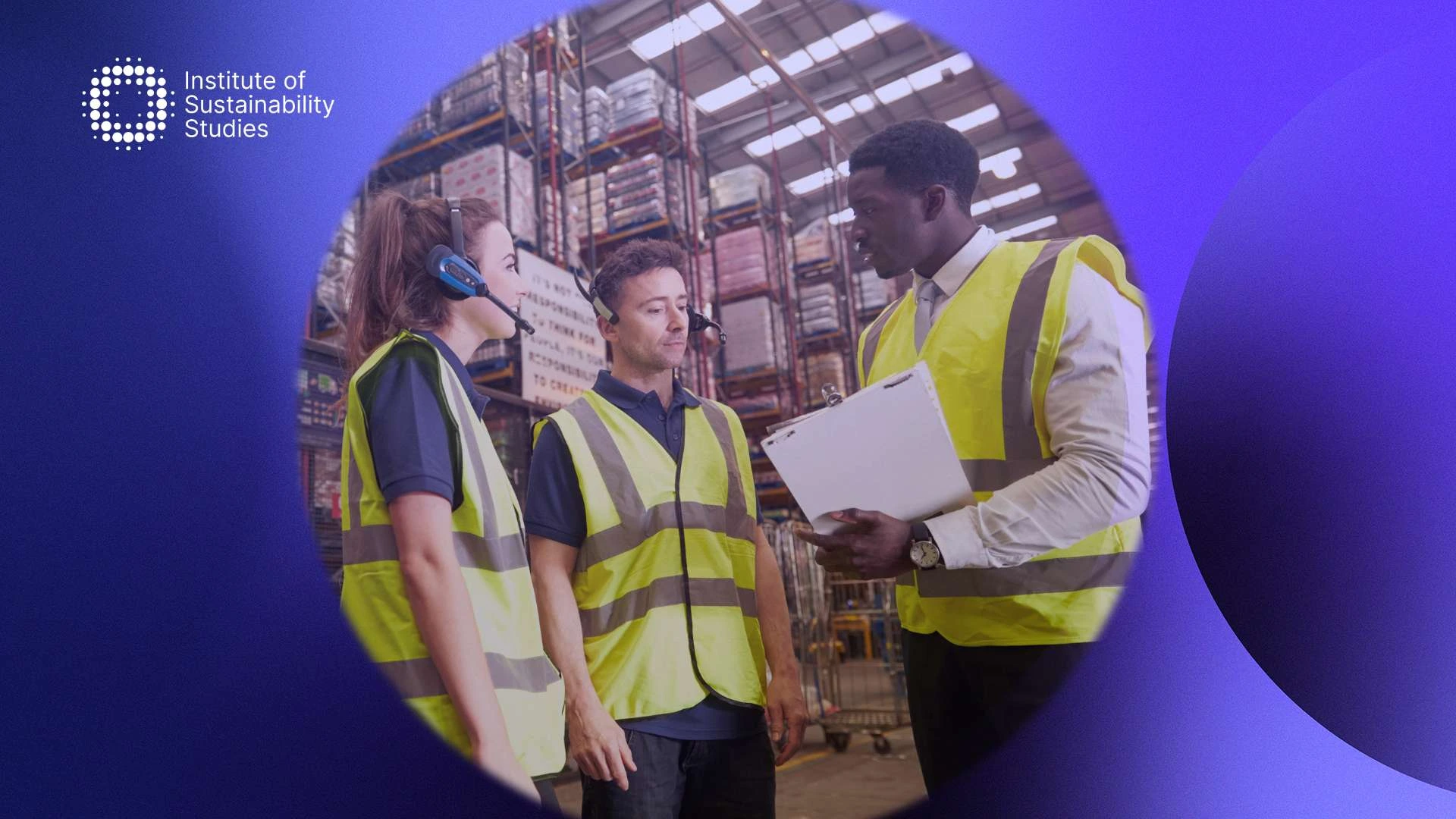Companies are increasingly expected to consider not only their financial performance but also their broader impact on society and the environment in their sustainability reporting. This is where the concept of double materiality comes into play, and businesses are already leveraging this approach. According to a Verdantix 2024 global survey, 69 percent of organisations already use double materiality assessments to enhance their ESG and sustainability performance.
Double materiality broadens the traditional understanding of materiality by looking at impact materiality as well as financial materiality. Impact materiality helps businesses understand how their organisation affects the environment and society. Financial materiality assesses the financial impacts that these matters have on the organisation itself. Therefore, double materiality offers a more comprehensive and balanced view of a company’s sustainability efforts by integrating both financial and non-financial perspectives. Continue reading to learn more about double materiality and how to assess it.
What is double materiality?
Double materiality is a concept that broadens the traditional understanding of materiality in the context of sustainability and reporting. It recognises that a company’s impact on the environment, society, and economy (often referred to as “inside-out” impact) can be just as important as the impact that these external factors have on the company’s financial performance (“outside-in” impact).
Why is double materiality important?
Double materiality is important because it provides a more comprehensive and balanced view of a company’s impact and risks related to sustainability. Below are several reasons why this approach is important.
Broader stakeholder perspective
Double materiality recognises that companies are accountable not only to investors but also to a wider range of stakeholders, including employees, customers, communities, regulators, and the environment itself.
This perspective ensures that the concerns and interests of all stakeholders are considered in corporate decision-making and reporting. In line with this, when companies address their financial and non-financial impacts, they can build greater trust with stakeholders.
Enhanced risk management
Double materiality helps companies identify a broader range of risks and opportunities. For example, while traditional materiality might focus on how climate change could affect a company’s financial performance, double materiality also considers how a company’s operations contribute to climate change and how this might create reputational, regulatory, or operational risks. Through this, companies can better anticipate risks and take the necessary actions.
Alignment with Sustainable Development Goals (SDGs)
Double materiality aligns with the broader global agenda, such as the United Nations Sustainable Development Goals (SDGs). By considering both the company’s impact on the world and the world’s impact on the company, businesses can contribute more effectively to achieving these goals.
Regulatory compliance and reporting standards
As sustainability reporting standards evolve, such as the Corporate Sustainability Reporting Directive (CSRD), double materiality is increasingly becoming a regulatory requirement. Companies that adopt this approach early are better positioned to comply with these standards and avoid potential legal or reputational risks.
Moreover, double materiality ensures that companies provide more comprehensive disclosures, covering not only the financial implications of sustainability but also the broader impacts of their activities. This leads to more robust and meaningful sustainability reports that meet the needs of a diverse range of stakeholders.
Driving innovation and competitive advantage
By considering both financial and societal impacts, companies are encouraged to innovate in ways that reduce their ecological footprint, improve social outcomes, and enhance their long-term competitiveness. This can lead to the development of new products, services, and business models that are aligned with sustainability principles.
Supporting ethical and responsible business practices
Double materiality reinforces the ethical responsibility of businesses to consider the broader impacts of their actions. It encourages companies to operate in a way that is not only profitable but also socially and environmentally responsible.
Best practices for assessing double materiality
Assessing double materiality requires a thorough understanding of both the financial and non-financial impacts of ESG factors on a company. Below are some best practices to guide you through the process.
Stakeholder Engagement
Engage with a wide range of stakeholders, including investors, customers, employees, suppliers, communities, and regulators. Understanding their perspectives and concerns is crucial for accurately assessing both financial and environmental/social materiality. With this in mind, maintain an ongoing dialogue with stakeholders through surveys, interviews, focus groups, and public consultations. This helps to capture evolving concerns and priorities.
Integrated risk and impact assessment
Assess both the financial risks and opportunities of ESG factors (outside-in impact) and the environmental and social impacts of the company’s activities (inside-out impact). Use a holistic approach that considers how these factors influence each other.
Additionally, conduct scenario analysis to understand the potential financial and non-financial impacts of various ESG-related risks and opportunities under different future scenarios. This can help in understanding the long-term implications of sustainability issues.
Materiality matrix development
Develop a materiality matrix that plots ESG issues based on their significance to stakeholders (social/environmental materiality) and their impact on the company’s financial performance (financial materiality).
This visual tool helps to prioritise issues that are most material from both perspectives. The materiality matrix should also be regularly reviewed and updated to reflect changes in the business environment, stakeholder expectations, and emerging risks and opportunities.
Use of established frameworks and standards
Align your double materiality assessment with recognised frameworks such as the Global Reporting Initiative (GRI) and the Sustainability Accounting Standards Board (SASB). These frameworks provide guidelines for identifying, assessing, and reporting on material ESG issues. Ensure that the assessment complies with relevant regulations and guidelines, such as the CSRD, which mandates the consideration of double materiality.
Data-driven analysis
Use a mix of quantitative data (e.g. carbon footprint, and revenue impact from regulatory changes) and qualitative insights (e.g. stakeholder perceptions) to assess materiality. This approach provides a comprehensive understanding of the issues at hand. Compare your company’s ESG performance and materiality assessment against industry peers and best practices. Benchmarking helps to identify gaps and areas for improvement.
Cross-functional collaboration
Involve various departments such as finance, sustainability, risk management, legal, and communications in the materiality assessment process. This ensures that different perspectives are considered, and the assessment is integrated into the broader business strategy. Secure support from senior management to ensure that the assessment is taken seriously and that the outcomes are integrated into strategic decision-making.
Continuous monitoring and review
Continuously monitor emerging ESG issues and trends that could impact the company’s financial performance or its environmental and social impacts. This proactive approach helps in keeping the materiality assessment relevant and up-to-date.
Regularly review and adjust the materiality assessment to reflect changes in the company’s operations, the external environment, and stakeholder expectations. This dynamic approach ensures that the assessment remains aligned with the company’s evolving context.
Conclusion
Embracing double materiality helps companies build greater trust with stakeholders, enhance risk management, and drive innovation. By considering both the financial and societal impacts of their operations, companies can create long-term value that benefits not only their bottom line but also the communities and environments in which they operate.
Through the best practices highlighted above, businesses can effectively assess and communicate their double materiality, ensuring they are well-positioned to thrive in an increasingly sustainability-focused world. The importance of sustainable development continues to grow, and with that, double materiality is set to remain a critical tool for companies committed to making a positive impact on not just their financial performance but the world around them.










